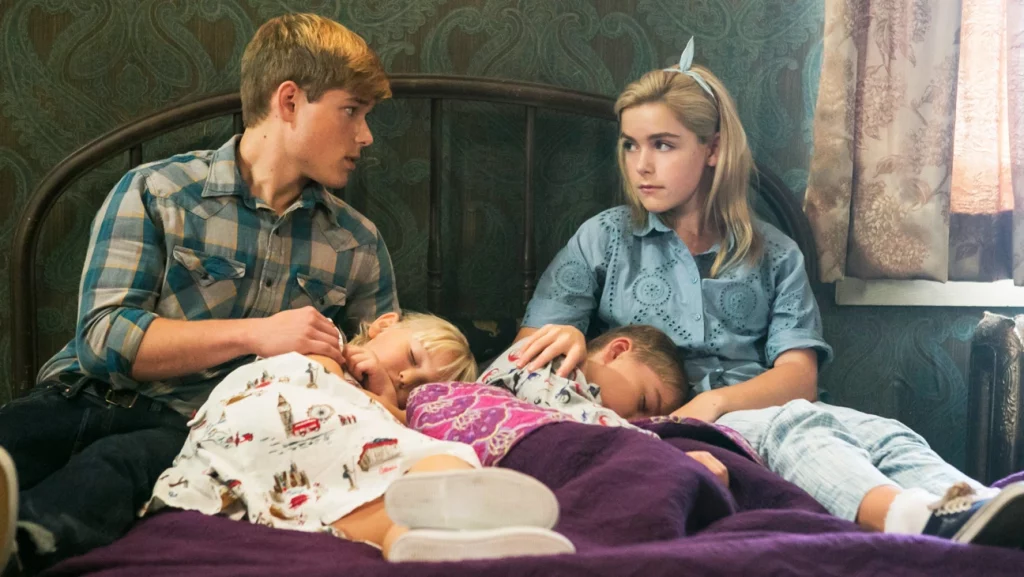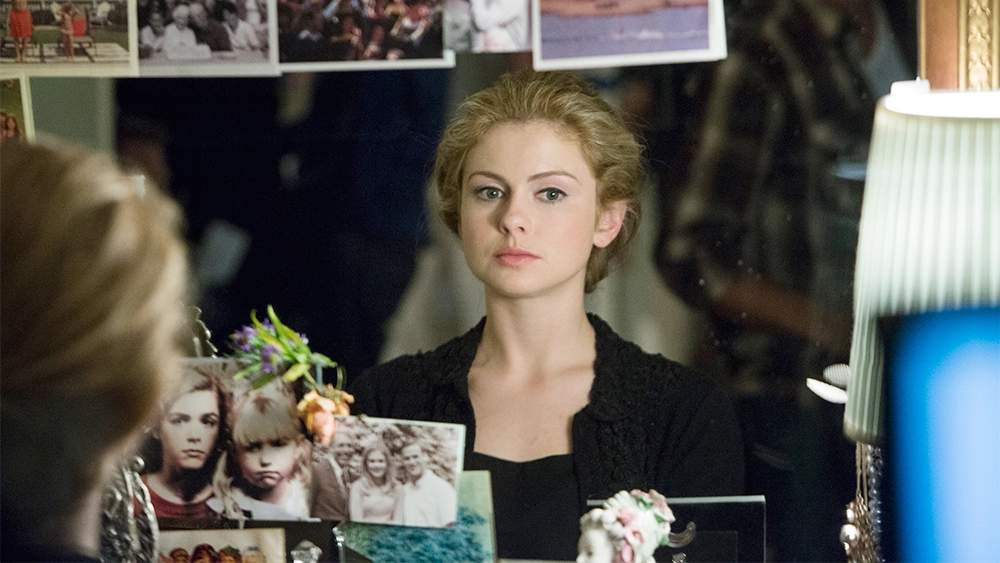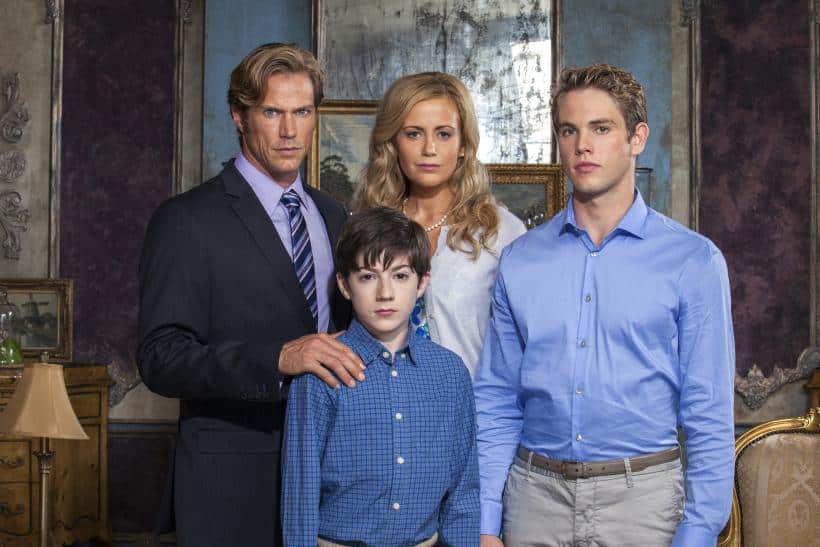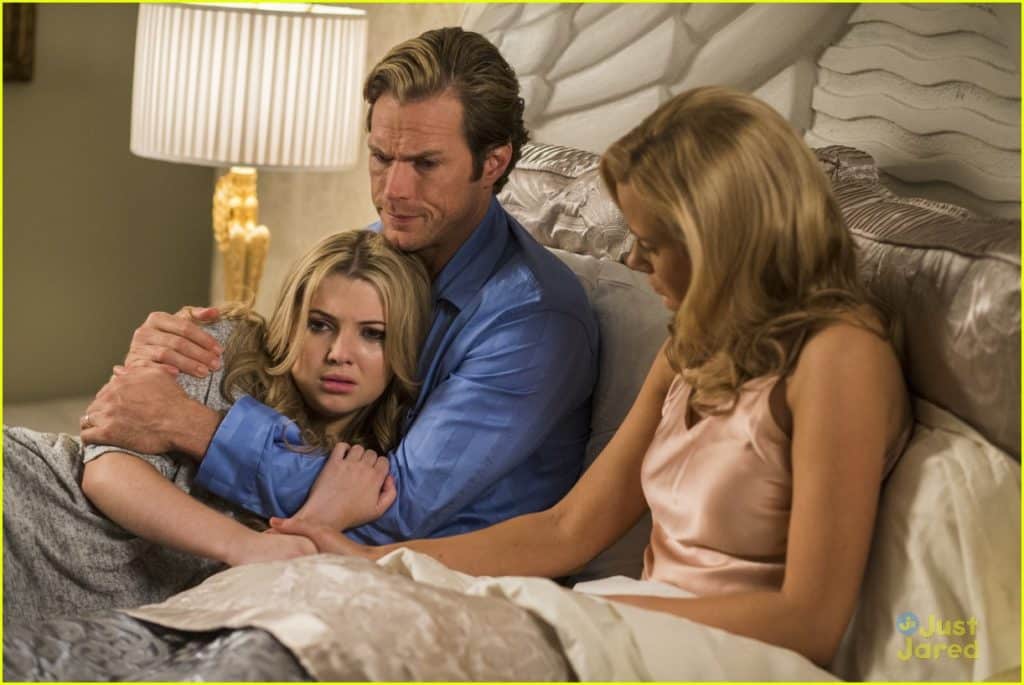As Lifetime premieres a new addition to V.C. Andrews’ Dollanganger Saga, we offer a crash course on what’s led us all to this.
Everyone has that book, the one you read just a little too early, the one your parents didn’t know you had or didn’t know the contents of. For me, that book was V.C. Andrews’ Flowers in the Attic. Gifted an older cousin’s shelf of books when I was 11 years old, I found myself in possession of several entire series of Andrews’ work (a note: V.C. Andrews died in 1986, and the books subsequently written under her name are by ghostwriter Andrew Neiderman), which I promptly devoured.
As a child brought up on fantasy and historical fiction, I thought I knew about drama, but I was wrong. This was melodrama, this was Gothic horror about family secrets, murder, and sex. Sex! Sorry, Mom, it’s probably time you found out. These were adult books mean for grown-ups, and if I read them, that made me a grown-up, didn’t it?
Often used as touchstones of misbegotten youthful reading and sidelined as trashy, the Andrews books were more than just the dirty parts to me. These were characters with problems, real (I was young), unimaginable problems, who nevertheless remained talented and optimistic but never treacly or goody-goody, as so many heroines for girls were made to be. And the stories themselves! I hadn’t known you could write stories like this. Before any real knowledge of romance novels or soap operas, my dramatic little soul craved anguish, and Andrews’ novels provided it in carloads.
At 14, I mapped out a five-book series of my own, each and every piece a faithful rip-off of an Andrews mainstay: a beautiful and talented heroine with a romantic name, an obsessive love interest, an evil elder family member, etc. However, the important part was, I wrote it. I realized it was something I could do and I gave it a whirl. It’s hard to label that kind of inspiration as trash. Over time, of course, I tired of the formula and moved on to other things, but these battered books with lurid covers stayed with me. There’s nothing like laying out the plot of a V.C. Andrews book to add spice to a conversation; ask me to draw you a family tree and I will.
It seems like the most logical thing in the world that Lifetime would be the network to finally buckle down and adapt these books into movies (theatrically-released versions of Flowers in the Attic (1987) and Rain (2006) only cover the first books in their respective series), beginning with her most famous series, the Dollanganger Saga. The last movie in this particular series aired in 2015, but Lifetime revitalizes it this week with the release of Flowers in the Attic: The Origin, based on the final Dollanganger book, Garden of Shadows. What’s that you say, you’d like to watch this new movie, but are hazy on the first four? Well, don’t worry about that. I’m here to help you on this twisted path, which starts in 2014 with Flowers in the Attic.

After the death of their father, plucky teen Cathy Dollanganger (Kiernan Shipka), her older brother Christopher, and younger twin siblings Cory and Carrie (this is all true) learn that their mother Corrine (Heather Graham) isn’t an orphan, but was instead disowned by her wealthy parents when she eloped with her father’s much younger half-brother. Yes, that’s their father, and yes, he’s their uncle. Corrine shleps her children down to the Foxworth Hall, the family estate, where her father, Malcolm, is dying, and her mother, Olivia (Ellen Burstyn), agrees to hide the kids until Corrine can worm her way back into her father’s good graces.
Cathy and Co. are set up in the titular attic (and a shared master suite, but that’s not as catchy a title) where they eventually spend nearly four years, slowly losing their health while suffering both the mental and physical abuses of their grandmother, and the increasing neglect of their mother, until Cory’s death (and Corrine’s remarriage) spur Cathy and Christopher into escaping with Carrie. And yes, while they live in the attic, Cathy and Christopher develop an un-sibling-like love for each other, a love which they eventually consummate (consensually, a significant and welcome change from the novel).

Though watered down for television, Cathy’s revenge plans unfurl in 2014’s Petals on the Wind. Set ten or so years after the first film, Cathy (Rose McIver), Christopher (Wyatt Nash), and Carrie (Bailey Buntain) are now young adults, having been adopted post-escape by a doctor named Paul Sheffield (the story opens at his funeral, writing an incredibly problematic book character out of the movie). Chris has a doomed romance with a local girl, Cathy moves to New York City with ballet bad-boy Julian Marquet, and Carrie commits suicide after being rejected by their now-local and still-awful mother Corrine (Heather Graham). In revenge, Cathy seduces Corrine’s husband Bart, shows up to their annual Christmas party dressed like her mother to list Corrine’s sins for the guests, and causes Corrine to have a breakdown, setting Foxworth Hall on fire. Chris and Cathy move to California, where they pose as a married couple and raise Cathy’s sons. You know, the only logical ending.
Cathy’s sons, particularly her younger son Bart (yes, the son of her mother’s husband) are the focus of the third movie, 2015’s If There Be Thorns. Does anyone want a story from Bart’s (and his older brother Jory’s) point of view? Not really. Does it make a lick of sense? Not at all. Now teenagers, Jory (Jedidiah Goodacre) and Bart (Mason Cook) live a relatively normal existence with parents Cathy (Rachael Carpani) and Christopher (Jason Lewis), who they know as their stepfather, but not…also their uncle. Bart is already the outsider of the family, but this is amplified when the house next door is bought by a mysterious widow, who turns out to be Corrine (Heather Graham in a grey wig), come to try and win over her grandsons.

Bart receives his great-grandfather Malcolm’s diary from Corrine’s servant John Amos, which turns Bart into a religious zealot, outraged when he learns about his parents’ real relationship. Bart starts wearing a suit and tie, and tries to drown his adopted sister Cindy, all hallmarks of your classic evil kid, while Jory amiably dances, and Cathy pops pills. Another showdown and another fire later, it seems like the family has managed to see themselves through one more crisis, but Bart is still under Malcolm’s spell.
Bart remains deeply under that spell in the penultimate movie of the series, 2015’s Seeds of Yesterday. Seeds, more than any of the other movies, suffers most from condensing a novel’s worth of plot into its time slot. Bart (James Maslow), now an adult, is vastly wealthy. How? Don’t worry about it. Business. He’s rebuilt Foxworth Hall, inviting his family to stay for his 25th birthday, when Corrine’s will is to be read at last, and Bart will, he expects, inherit her fortune. Said family, Cathy and Chris (a returning Carpani and Lewis), Jory (Anthony Konechny), his pregnant wife Melodie (Leah Gibson), and Cindy (Samantha Hanratty of Yellowjackets) arrive, and trouble ensues.

Bart doesn’t inherit the money, a ballet accident paralyzes Jory, and a despondent Melodie has an affair with Bart until her babies are born, and then splits. Cindy, now a teenage sexpot, fights with Bart until they realize it’s because they’re in love (but, as Cindy brightly observes, “It’s not like we’re blood sibs, like Mom and Dad!”), and Bart nearly succumbs to Malcolm-induced madness until…he doesn’t. The saga ends with an Andrews-classic ending: Jory heads off into the sunset with his twins and their nanny, Bart and Cindy marry and become televangelists (I’m not lying), and, following Chris’ death in a car accident, Cathy wanders up to the attic of the new Foxworth Hall and dies. Of what, you ask? Grief? Sure. It’s grief.
That brings us up to date with the Dollanganger Saga! Are you exhausted? Confused? Did I really say that Bart marries his adopted sister and everyone is glad? This is all normal, really. It’s the V.C. Andrews effect. It’s a tough thing to explain, but I had to try. Garden of Shadows, the inspiration for the upcoming Origins, is a prequel to the series, telling the story of Olivia, the evil Grandmother from the first two movies, and how she got herself tangled up with this family. It’s an attempt to humanize a villain and provide context to their cruelty, which is always a gamble, so let’s see what Lifetime does with that. Whatever it is, it’ll be fun, it’ll be overblown, and somewhere, someone will be inspired.
Flowers in the Attic: The Origin is now available on Lifetime – stay tuned for our full review!